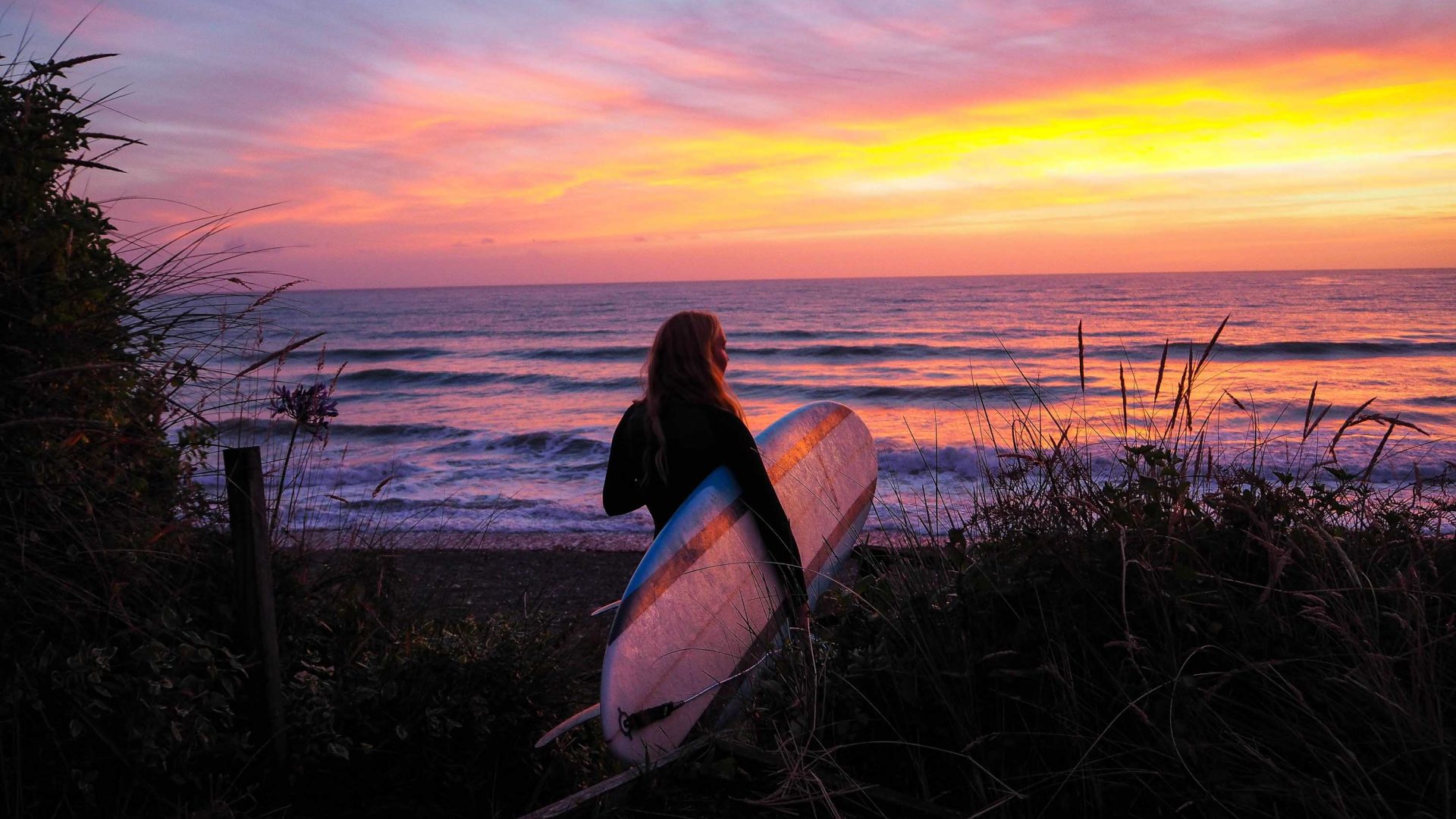
Fresh from catching her first wave, writer Tara Wells explores why middle-aged women are choosing this moment to finally dip their toes into the water and tick surfing off their bucket lists.


Fresh from catching her first wave, writer Tara Wells explores why middle-aged women are choosing this moment to finally dip their toes into the water and tick surfing off their bucket lists.
I was born to surf. Standing up on my first-ever attempt, catching a wave all the way into the beach, I know this to be true. The fact that I can’t actually surf is beside the point. Or perhaps it’s the entire point. Because for me and Australian women of my generation who grew up beachside, surrounded by surfers, living awash in surfie culture, who experienced no physical barriers of access or ability, nor lack of interest, there is something fishy about why we didn’t learn earlier.
While times have changed—the percentage of 15- to 17-year-old girls who surf today is nearly the same as boys, according to research commissioned by the Australian Government—there is one cohort of would-be surfers who are finally ready to get on board. A wave of women in their late 30s, 40s and 50s are the oldest grommets in the water. And I’m one of them.
I’m at Cabarita Beach in New South Wales’ Tweed region, part of a string of sleepy coastal villages, mangrove-bordered riverland and temperate forest hinterland. It’s all still low-rise and low-key, unlike its near-neighbor—the flashier Gold Coast, just 20 minutes north over the border into Queensland.
Today’s surf lesson is with Belén Alvarez Kimble. She’s a former pro surfer from California and the founder of Australia’s first all-female surf school, Salty Girls. Belén came to the Tweed first for the love of a person then stayed for the love of the place.
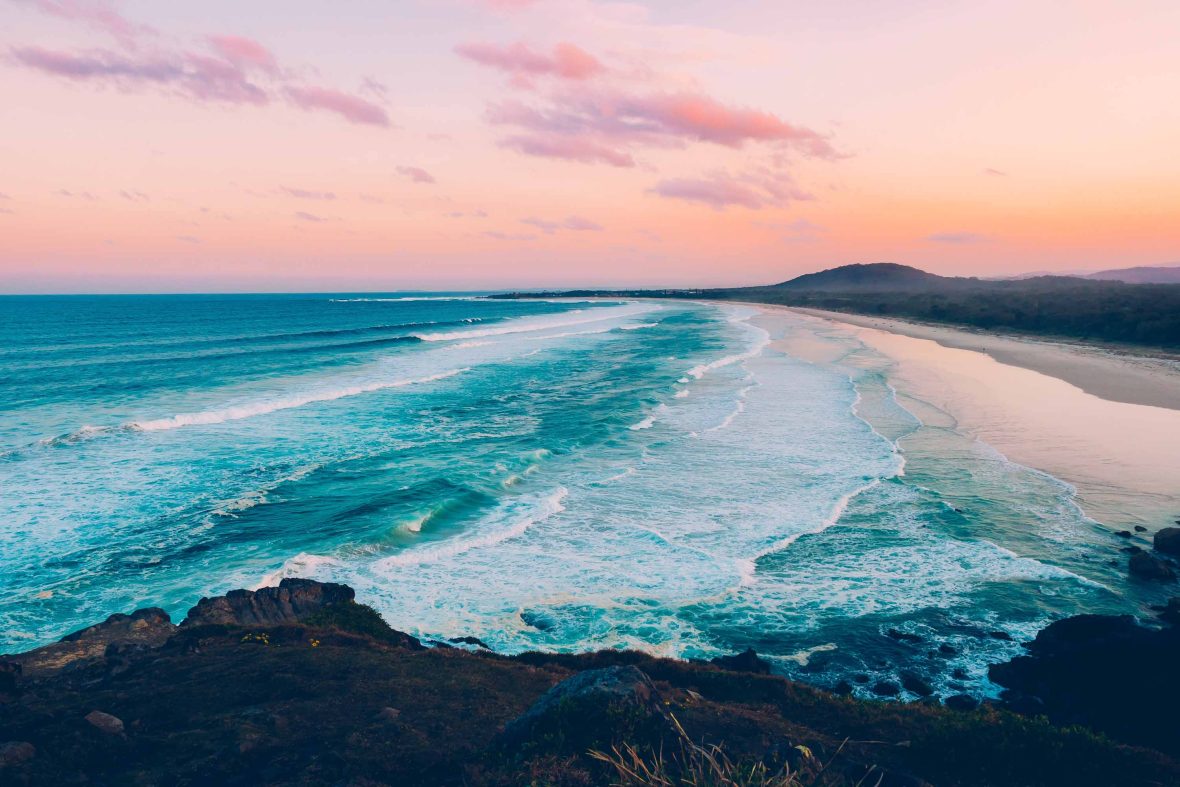
The area’s renowned surf breaks, including Fingal Head, Dreamtime Beach and Duranbah Beach, were formed by basalt lava flowing from an erupting Wollumbin (formerly Mount Warning) 23 million years ago, making the sea as rich for surfing as the land is for farming.
Tucked into the southern cove beside the steeply-sloped Norries Headland, the lesson starts on squeaky golden sand. Myself and two others—I’m going to say it… middle-aged women—are practicing ‘popping up,’ doing a fast push-up onto both feet.
Belén and I are the same age. We both went to high schools where saying “everybody surfed” actually means “only the boys surfed.” But we were steeped in very different surf cultures.
Belén is showing us where to position our feet on a sturdy blue foam board before “standing up on an object that’s moving, on water that’s moving.” So far, so good, although some thanks goes to gazing wistfully upon Keanu Reeves’ character in the 1991 movie Point Break (“Pop up! You dragged your knee that time, you’ll just wipe out.”). It’s quickly apparent that Belén’s instructions are not only less grumpy than Keanu’s instructor, but they’re also more nuanced. Particularly for women.
“I’ve got a thing I call ‘BOB,’ which is Boobs Off Board,” Belén says. “It helps with positioning because women’s breasts can add more weight towards the front of the board. And as we’re paddling, you don’t want to nosedive, you want to keep that weight back. Women laugh about it but it’s also technique.”

With the first victorious wave done, I walk, pushing my board most of the way, back to the near-shore break, glad today’s gentle surf conditions mean I don’t have to paddle, paddle, duckdive, paddle. The next wave I catch shows I may understand popping up, but falling off backward means I haven’t worked out balance.
Belén and I are the same age. We both went to high schools where saying “everybody surfed” actually means “only the boys surfed.” But we were steeped in very different surf cultures.
Belén stood up on a friend’s nine-foot board for the first time at Carlsbad, half an hour north of San Diego, California. Her Mexican-American family, opposed to the idea of their daughter surfing, called her ‘coconut’—Brown on the outside with a white inside. For Belén, defying her family’s cultural expectations was a bigger hurdle than gender. In the water, she remembers only an occasional derogatory “chicks and sticks” remark (‘sticks’ refers to the board). Mostly, it was fine.
“It wasn’t hard being a female on the water because the boys were nice,” she recalls. “They didn’t see many girls out there, and you were giving it a go, so they were really supportive.”
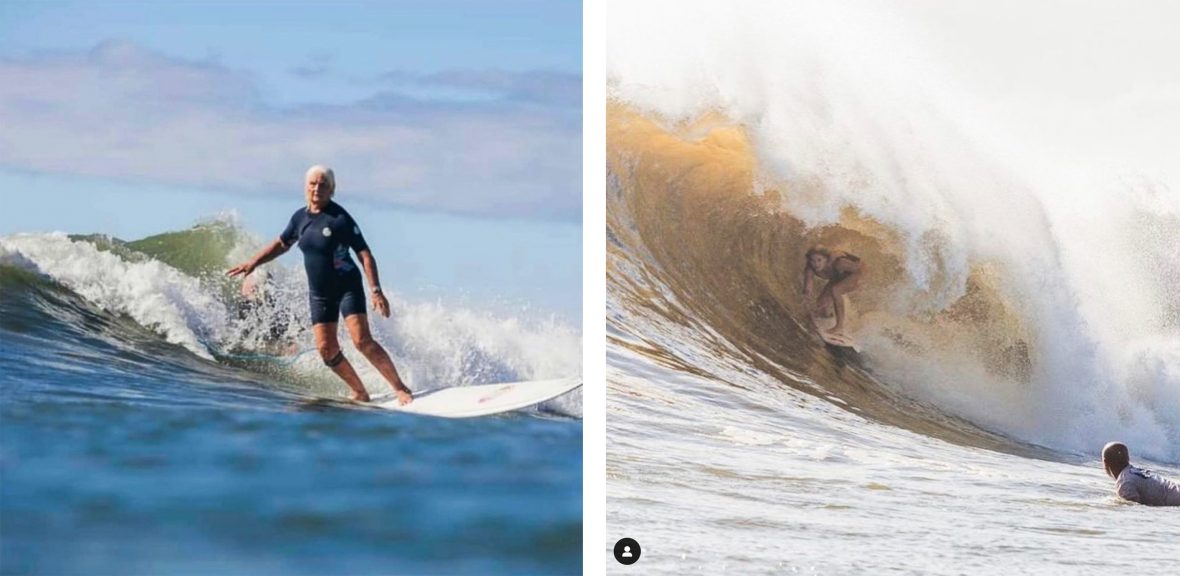
Belén worked at the first all-girls surf shop, WaterGirl, then as an instructor at the first all-girls surf school, Surf Divas, both on San Diego’s North County coast. As a pro surfer, she worked mainly as an ambassador rather than a competing athlete, encouraging and promoting female surfers.
So when Belén came to Australia and noticed the lack of surf community for women, she set up Salty Girls Surf School in 2008. Initially, it was ahead of market demand. What she hadn’t anticipated was that, despite Australian women winning 23 of the last 33 world surf titles since 1989 (15 of those shared between the Tweed’s Stephanie Gilmore and Layne Beachley from Sydney’s northern beaches), women still didn’t feel like they had a place in the water. Customers told her similar stories of why they hadn’t learned before. The phrase ‘Puberty Blues’ kept coming up.
“A lot of those guys that were out in the water being dickheads, sending you back into the beach if you were a girl, they now have daughters that want to surf. All of a sudden, they realize, ‘Oh, what about my daughter?’”
- Pam Burridge, pro surfer
I grew up around Sydney’s southern beaches, the setting of Puberty Blues, which was first a 1979 novel, then a 1981 movie and, still timely, a 2012 television mini-series. It was fiction telling non-fictional truths about misogynist surfing culture. Boys surfed. Girls sat on the beach and did the boys’ bidding (“Get us a Chiko Roll and don’t take a bite out of it or you’re dropped!”).
The female protagonist’s ultimate victory is to ride a wave, boys be damned. Growing up. I thought Puberty Blues’ storyline and outdated insults (“Rack off, ya fish-face moll!”) were from another time but still, I didn’t get in the water and I didn’t see other girls try, either.
Former pro surfer and 1990 world champion Pam Burridge now runs a surf school on New South Wales’ south coast. Like Belén’s first experience, once she tried surfing she was hooked—even the toxic Australian surf culture of her time (as seen in the 2020 documentary Girls Can’t Surf) couldn’t stop her.
From feeling “sort-of-semi-under threat a lot of the time” in the water, she now instructs groups of mainly “mature learners” at sold-out women-only surf retreats. They all cite surfing as a bucket list item, something they’d always wanted to do. Pam names generational change as one reason why women feel ready to learn now. The dynamic in the water, she says, has changed from individualistic machismo to a community more aware of differences.
“A lot of those guys that were out in the water being dickheads, sending you back into the beach if you were a girl, they now have daughters that want to surf,” Pam says. “All of a sudden, they realize, ‘Oh, what about my daughter?’”

In the water, Belén is ever-encouraging and it rubs off. When I’m not desperately trying to turn my board around to face the right direction in time for a potential wave, I join her in whoopin’ in joy when a fellow student gets up on her feet. No matter how long or short the ride lasts—and universally lacking grace as we fall off—we finally taste the thrill that advertising long-promised: ‘Only a surfer knows the feeling.’
One more wave, then it’ll be time to head back. Belén is keen to share what she feels is the biggest issue post-Covid lockdowns, when everyone discovered surfing at the same time that lessons were banned: Surf etiquette. Namely, waiting your turn so that others may have a go. No ‘wave hogs’ allowed. Belén steadies my board and makes me give way to a mid-30s woman more experienced than I am. Her male surf companion waits, too. It’s finally my time and I’m ready. I ride the wave for a long, glorious… half-second.
As we come to shore, a huge dog sits attentively on the beach beside a lazily thrown towel. “Good girl,” Belén coos to the Ridgeback-Mastiff mix. The dog has eyes only for her owner surfing in the water, like the good girl she is. Us? We’re dripping salty water, boards under our arms, feeling the stoke.
***
Adventure.com strives to be a low-emissions publication, and we are working to reduce our carbon emissions where possible. Emissions generated by the movements of our staff and contributors are carbon offset through our parent company, Intrepid. You can visit our sustainability page and read our Contributor Impact Guidelines for more information. While we take our commitment to people and planet seriously, we acknowledge that we still have plenty of work to do, and we welcome all feedback and suggestions from our readers. You can contact us anytime at hello@adventure.com. Please allow up to one week for a response.


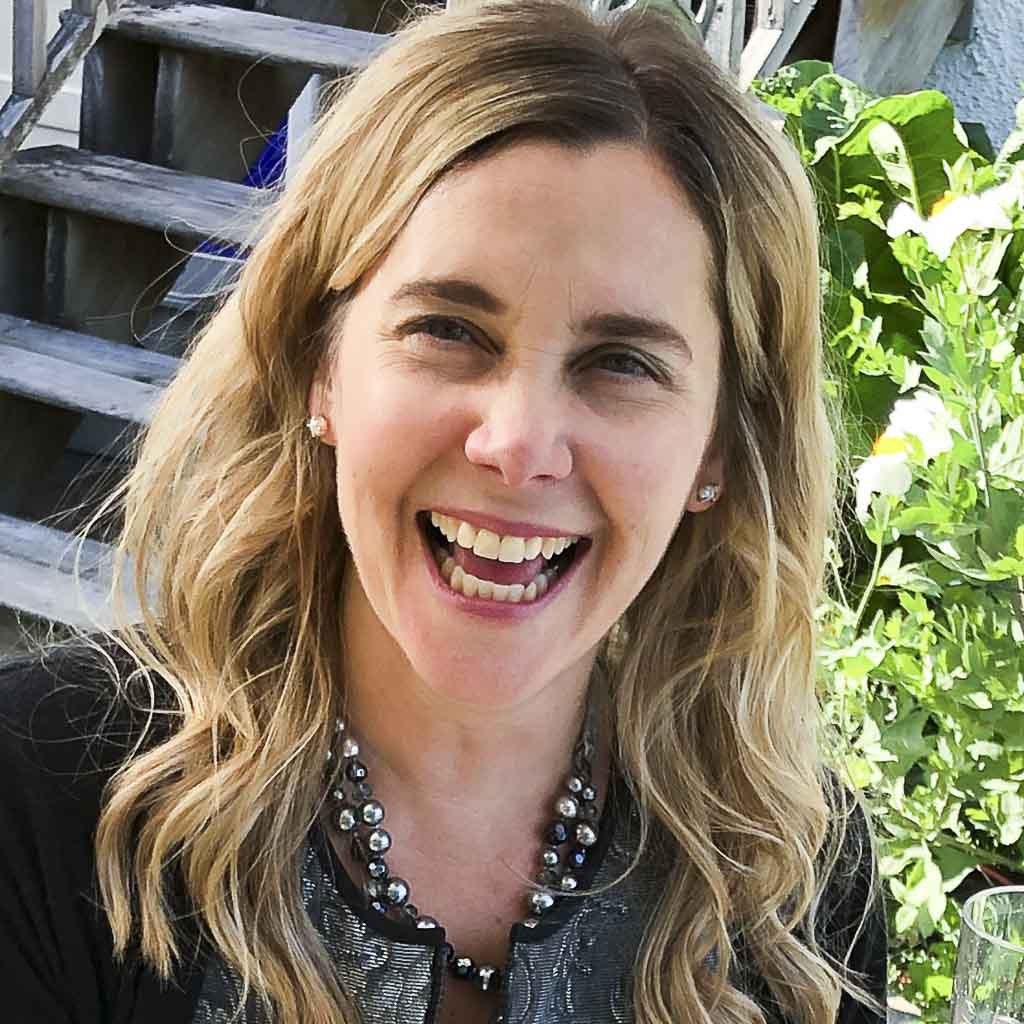



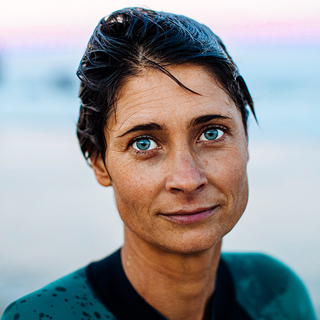

Can't find what you're looking for? Try using these tags: